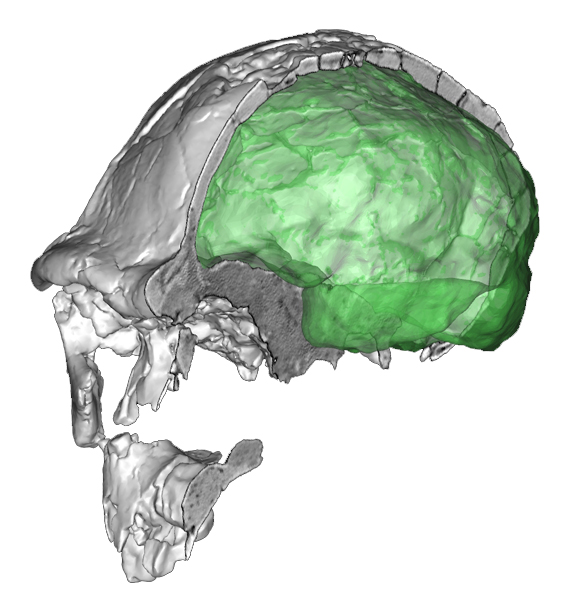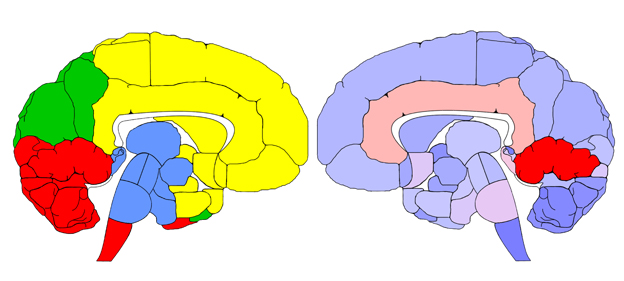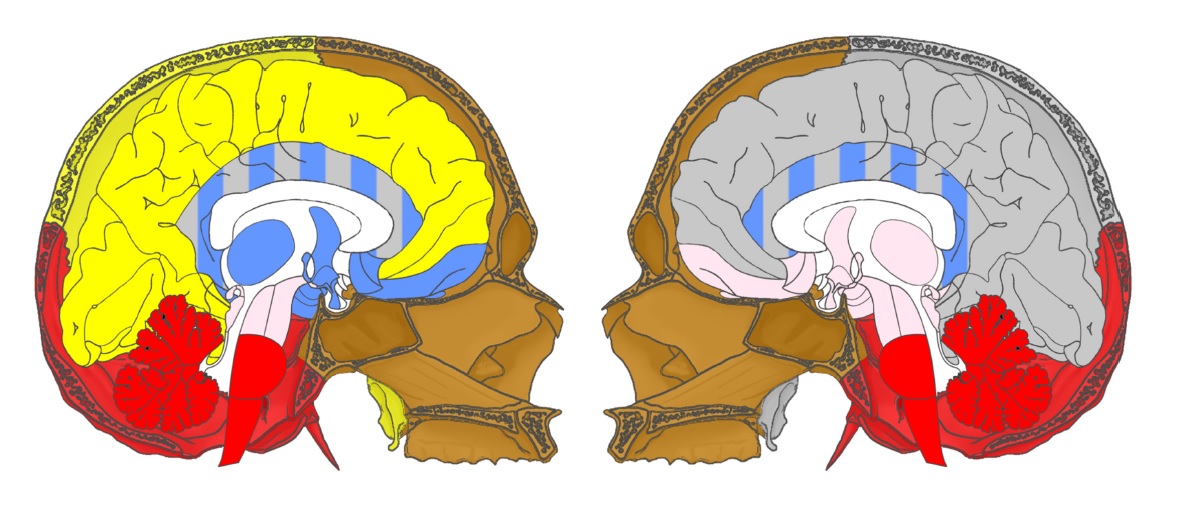After all those papers devoted to network analysis of the human brain topology, now we have published the first brain anatomical model of a distinct species: chimps. Humans and chimps apparently display a very similar spatial organization of the brain, which may suggest a common cerebral arrangement for all hominoids. The inferior and superior brain regions belong to two distinct modules, possibly influenced by the morphogenetic influence of the cranial base and vault, respectively. Nonetheless, in chimps, the dorsal part of the cerebellum is the most topologically complicated region of the brain, while in humans the parahippocampal area displays the most entangled spatial position. In both cases, the cranial base is a key structural region, in particular its posterior (chimps) and middle (humans) fossae. Assuming that the topology of chimpanzee represents a plesiomorph arrangement, we can conclude that the evolution of the brain in Homo sapiens was associated with an increasing topological burden of the temporal lobes, and especially its medial areas. Previous models also evidenced a high topological burden for the retrosplenial cortex. The parahippocampal and retrosplenial areas surround the thalamic regions, and we can hypothesize that during human evolution these anatomical elements experienced new constraints and structural limitations.
Tag: brain topology
Skull & Brain
In the last years, we have been using network analysis to investigate the topological organization of the human brain, not in terms of connections but of spatial constraints. We have applied this approach to the Brodmann’s map and to a comprehensive brain model, also to consider the modular organization of its elements. Now, we have added the skull. The new model points to the sphenoid bone and parahippocampal gyrus as the most topologically complicated region of the human craniocerebral system. The ethmoid bone is a key element of the facial block, the cingulate gyrus bridges the anterior and posterior regions, and the parietal bone is sensitive to multiple cortical influences. In terms of modularity, there is a vertical component (vault vs base) and a longitudinal one (the three fossae). The frontal bone is integrated with the face, but the parietal and occipital bones are apparently more integrated with the brain (with the fronto-parieto-occipital block and with the cerebellum, respectively). This information is mandatory to provide inference on brain morphogenesis and evolution, trying to consider, in terms of ontogeny and phylogeny, where the brain molds the skull, and where the skull molds the brain.


